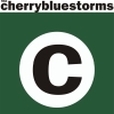APRIL 22, 2009
I haven’t made an independent study of the other art forms, but I would be surprised to find that Dali didn’t have a favourite set of brushes, Nijinsky a favourite pair of slippers, Dickens a favourite set of pens and Ron Jeremy a favourite pair… well, you get the idea…
In the case of the musician, there is often a special fondness for one’s tools of the trade. After all, the musician’s medium is sound and any noisemaker, polite or otherwise, is his or her currency. So, I have been challenged to offer my thoughts about and give tribute to, my little wooden, metallic and silicon-based friends.
I wear a number of hats in TCB. However, guitar was my first instrument and it remains my main tool for writing and performing. I am often asked about the guitars I play at shows and so I’ll talk about them here.
I have a fondness for the gear of the 1960’s. There is something magical about that era for me as for many others. The visual style and sounds that these machines make are exciting for me. Of course, they sometimes remind me of my early heroes; but it is soon apparent that I often do something quite different with them. Nevertheless, I detect a kernel of grace saved from those heady days.
I have been asked why I play a certain guitar on a certain song. Often I play a song on the instrument I wrote it on, or the instrument that I keep tuned to the tuning I use on that song. Sometimes I will use a particular guitar because it will get a certain sound. Often that is the case where I have used more than one guitar on a recording. For example, I used a Gibson SG for the main guitar in Fear of Gravity and a Fender Stratocaster for the solo guitars and then used a combination of a Lowden Dreadnought acoustic 6-string and a Takamine Dreadnought acoustic 12-string for some additional texture, particularly in the choruses. All the guitars were in a tuning designed for the song except the Strat.
My latest acquisition is a 1966 Fender Jazzmaster that I found in a store in Boston. The first thing I noticed upon picking it up was that it reminded my hands of the first electric guitar I owned, a 1968 Fender Musicmaster. The Jazzmaster was a higher end guitar, while the Musicmaster was a student model with a ¾ scale neck. Still, there was a familiarity that spoke to me immediately. I keep this guitar in standard tuning and I have been playing Start Again, To Love You Is A Crime and our version of “Words” by The Bee Gees on it.
My “main” guitar, if I have one, is the 1966 Rickenbacker that I bought from David Swanson, late of The Pop. The Pop was a local L.A. band, one of the first to produce an independent record, before the Punk scene was thought of. The Pop went on to sign at least a couple of major label record deals, but success eluded them. I cherish my memories of seeing David blasting Power Pop chords from the Ric at The Whisky. Years later, when I was working with David on what was to become his RCA solo album, I bought the Ric. It seems to love the E minor tuning I keep it in. If you’ve seen the “Maximum R&B” poster that came with The Who’s Live at Leeds album, then you’ve seen a picture of this model. I remember the first time I plugged it into the Vox AC 30 amp I bought and realized the sound I’d been after since I started playing. I play Daisy Chain, Just A Kiss Away, Her Mirror Cracked, Here and our versions of Baby, You’re A Rich Man and Wear Your Love Like Heaven on the Ric.
The guitar I probably get asked about the most is my 1967 ES-335-12 electric 12-string. This relatively rare model was a favourite of folk-rockers John Phillips (Mamas & Papas) and Richie Furay (Buffalo Springfield). Later, the ladies in Lush played them. I keep mine in an alternate tuning that I learned from a leprechaun who learned it from Robin Williamson. Currently, I play As Above So Below and London Bridge on it.
Another guitar that gets a lot of attention is my 1967 Gretsch ‘Nashville”. It is very similar to the Country Gentleman that was George Harrison’s most famous instrument and John Lennon owned one, though it may not have appeared on any Beatles record. This is another guitar that I keep in standard tuning, though it is particularly good at handling various tunings.
I do occasionally play other guitars with the band, but other than the 1965 Martin D-28 acoustic that I use in the studio, these are my main accomplices. Thanks to Fender, Rickenbacker, Gibson, Gretsch and Martin for building these wonderful machines. Next time I’ll be discussing my beloved amp and pedals!
– GL
